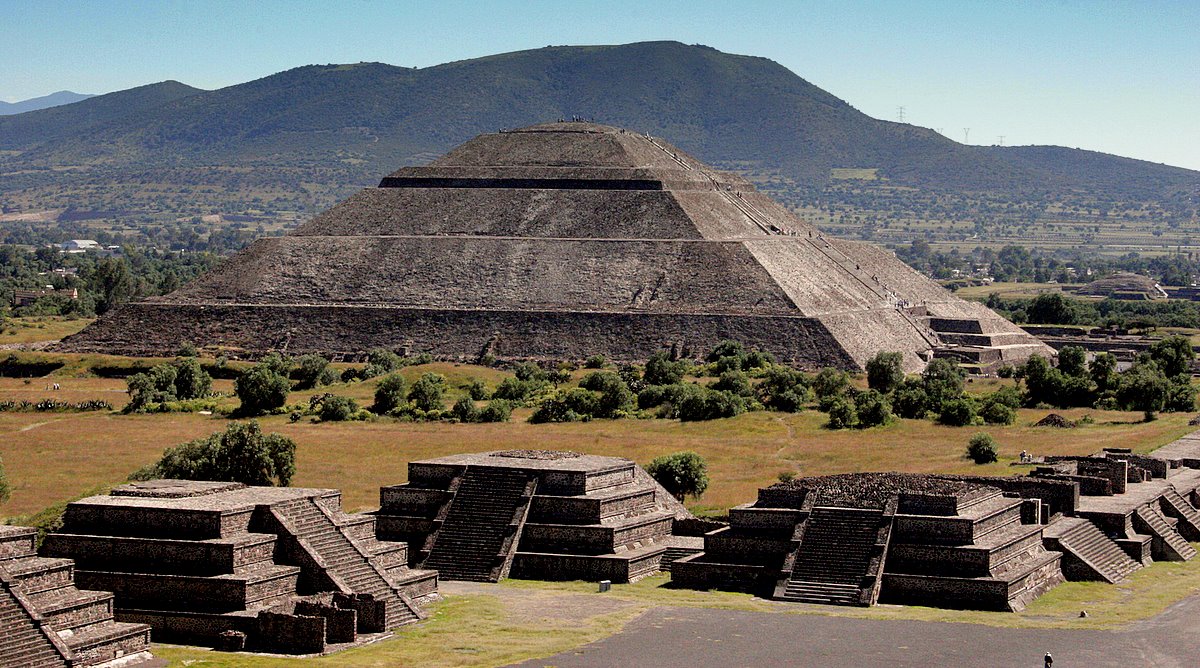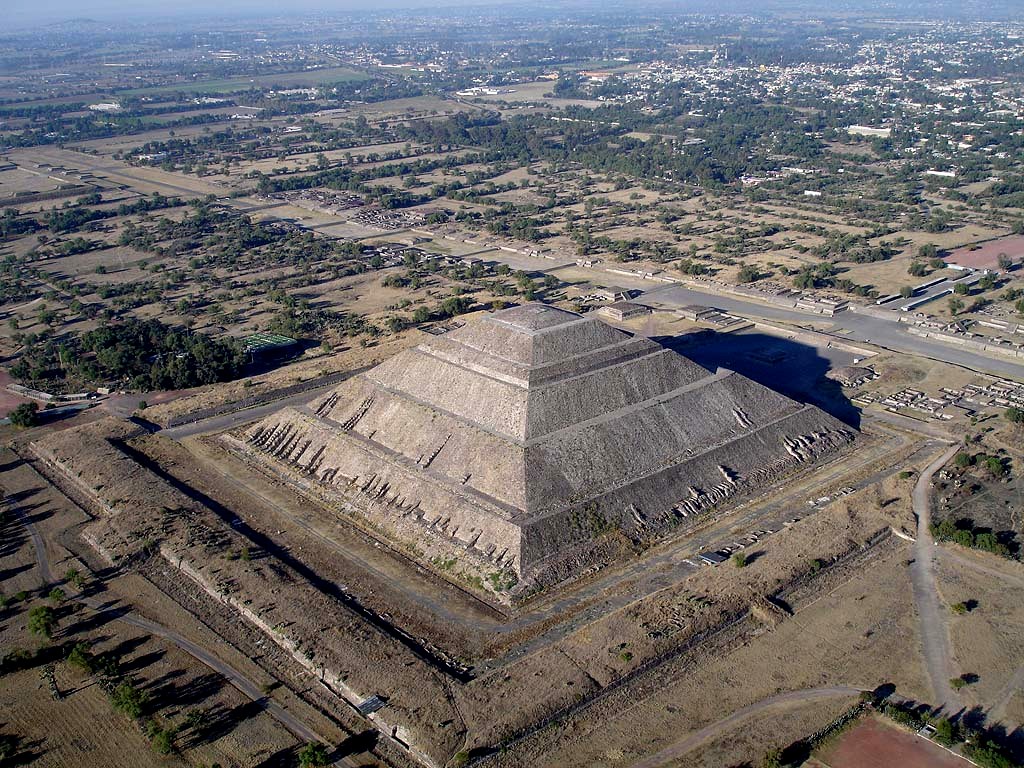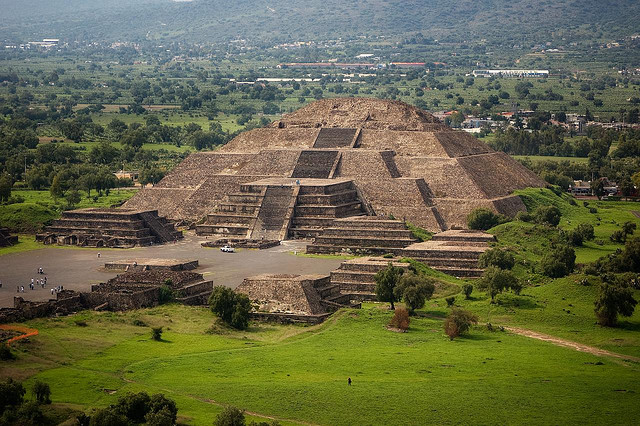ocated about 30 miles (50 kilometers) northeast of modern-day Mexico City, Teotihuacan was one of the largest urban centers in the ancient world. No one knows who built it. The city flourished between 2,100 years ago, when construction began, and about 1,400 years ago, when it went into a period of decline, including a fire that caused great damage. However, even with the decline, the city was never truly “lost” — the Aztecs made regular pilgrimages to the site in later periods.
What the city’s own inhabitants called the city and its structures is unknown. The current name, Teotihuacan, was given to it by the Aztecs and means “the place where the gods were created.”
Size and influence
At its zenith, Teotihuacan encompassed an urban core of about 8 square miles (20 square km) with a population estimated at more than 100,000 people. Its influence was felt throughout central Mexico and as far south as Guatemala.
The city was organized using a grid plan, many people living in what scholars refer to as “apartment compounds,” containing multiple families. An archaeological mapping project identified about 2,200 of these structures within the city, with excavations showing that some compounds were richer than others, containing more stone and lime plaster in their construction.












